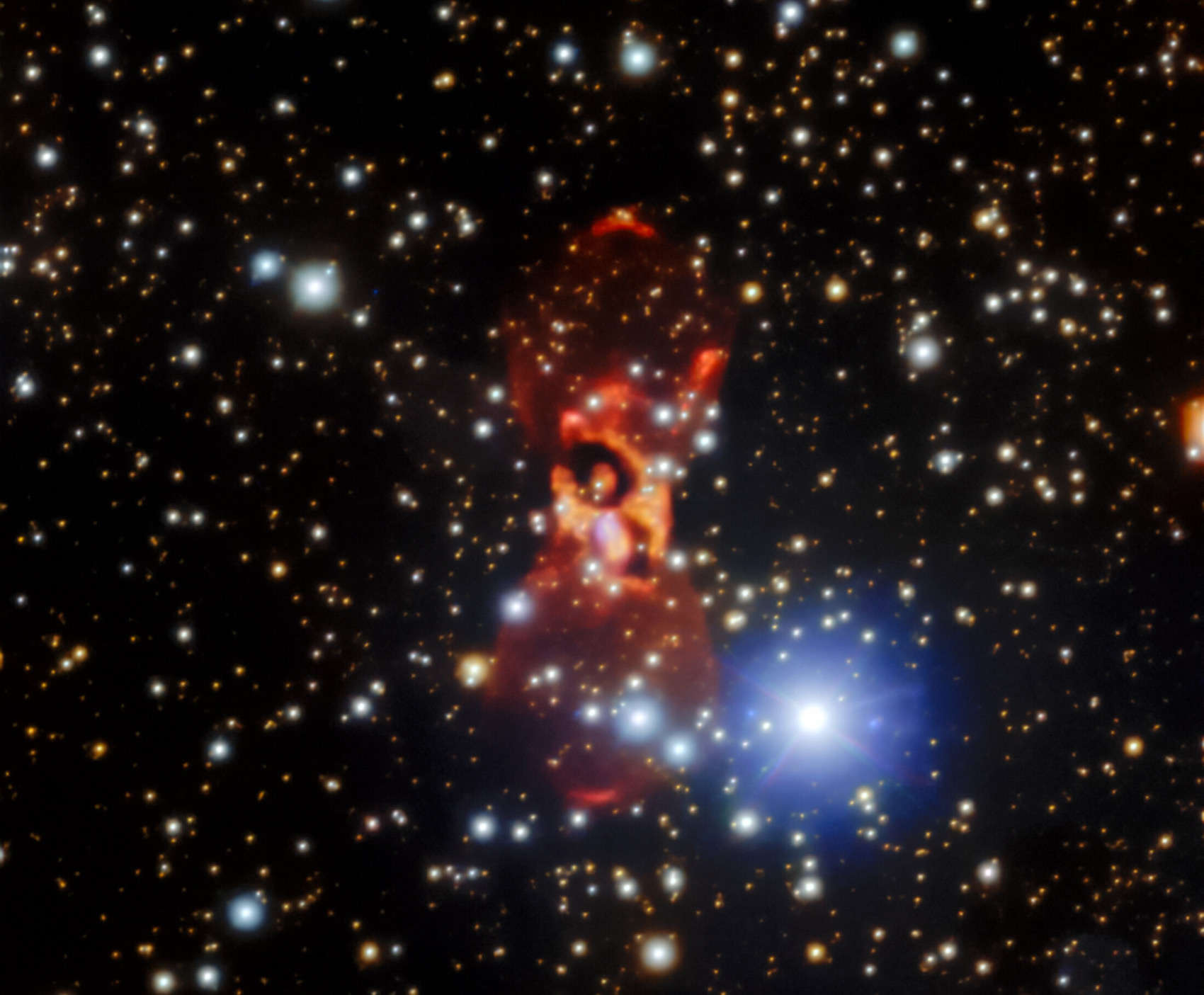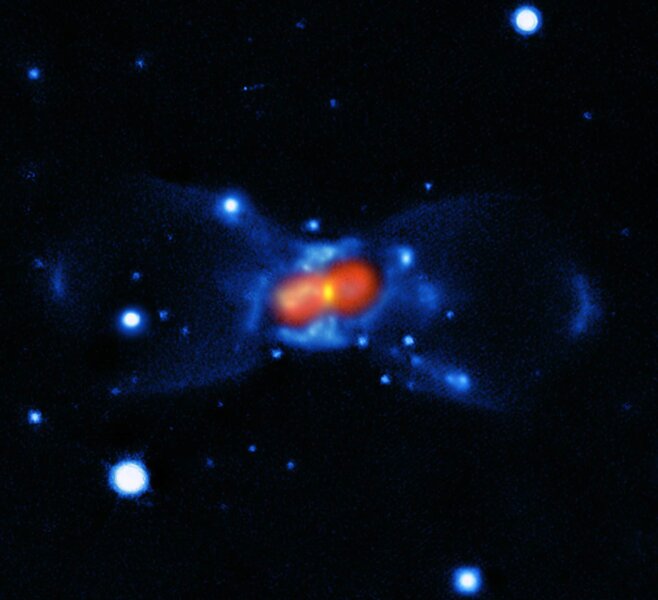Create a free profile to get unlimited access to exclusive videos, sweepstakes, and more!
CK Vulpeculae: Something went boom but we don't know what

There are some objects in space that we kinda sorta know what they are, but the details are still fuzzy. For example, CK Vulpeculae is very obviously a bipolar nebula, made of gas and dust in an hourglass shape. We also know it formed in late 1670, when a star in the constellation Vulpecula (the fox) underwent a tremendous outburst of energy, going from invisibility to easy naked-eye viewing.
But... what is it? That is, what specifically caused the star to suddenly grow immensely in brightness and expel these huge winds of gas outward at high speed?
I wrote about this object in 2018, when astronomers posited that it may have formed when a brown dwarf — an object more massive than a planet but less so than a star — got too close to a compact white dwarf and was torn apart by the smaller object's immense gravity. Other ideas have been proposed, too, generally involving two stars colliding one way or another.
All these hypotheses were predicated on the idea that the nebula was about 2,000 light years away, based on various measurements made of it.
However, a new series of observations indicate the nebula is a wee bit farther away than that: A team of astronomers have shown that CK Vulpeculae is actually a little over 10,000 light years away, five times farther than thought!
That changes everything. It means the 1670 event was far more energetic than previously thought, the gas is moving far faster, and that the ideas of what caused the actual event can be tossed out a window.
The new observations were made using the monster Gemini North telescope in Hawaii. They took spectra in the infrared, dissecting the light into vary narrow color bins, which allows the gas velocity to be accurately measured. Earlier observations had done this as well, but looked more toward the inner part of the nebula, near the star where the gas isn't moving very rapidly; this time they looked at the very tips of the lobes (the short red arcs in the image), under the assumption that gas that got that far out is moving the fastest.
What they found is that the gas at those locations is moving away from the center at the staggering speed of over 2,100 kilometers per second, fast enough to cross the continental US in under three seconds.
They also compared the observations to ones taken about a decade ago, and can see that the gas has visibly moved in the time since. The amount can be measured, and coupled with the measured speed they can use that to get the distance to the nebula: 10,400 light years, five times farther than thought.
But if it's farther away, that means the energy blasted away in the 1670 event must have been higher to get as bright as it did from the greater distance… in fact about 25 times more energetic (the brightness of an object goes as the square of the distance, so 5 times farther away means 5 x 5 = 25 times as much energy). That's a lot. At its peak it was shining at a luminosity 7 million times brighter the Sun!
That tosses most stellar merger scenarios into the trash; they can't make that much energy. And in fact this puts it in a weird place. It's not nearly as much energy as a supernova, when a star explodes, but it's over 15 times more energy than released in a classical nova, when material on the surface of a white dwarf accumulates and detonates in a thermonuclear flash. For lack of a better term, it's called an intermediate luminosity optical transient, or ILOT.
And it's not at all clear what can power such an event. It's possible, maybe, that a massive star right before the end of its life undergoes what's called a late thermal pulse, a gargantuan flash of energy generated in its core by unstable nuclear fusion. The energy is similar to an ILOT, and it could blow off the outer layers of the star, creating a rapidly expanding nebula. But the details of such an event aren't well understood. Other ideas the team listed include big asteroids slamming into a white dwarf, a massive blue star undergoing some sort of violent outburst, or maybe a classical nova but a really peculiar one.
But they're more or less spitballing with those. Given the new observations, no one knows what powered CK Vulpeculae.
Yay! A mystery! It's either something we haven't thought of yet, or a really weird set of circumstances superpowering (or hugely underpowering) a known kind of event. Either way, cool.
I expect this will prompt new observations to get to the heart of the matter. If there's some new type of explodey thing out there in space, you can bet astronomers will track it down and figure it out. We love this kind of stuff.




























